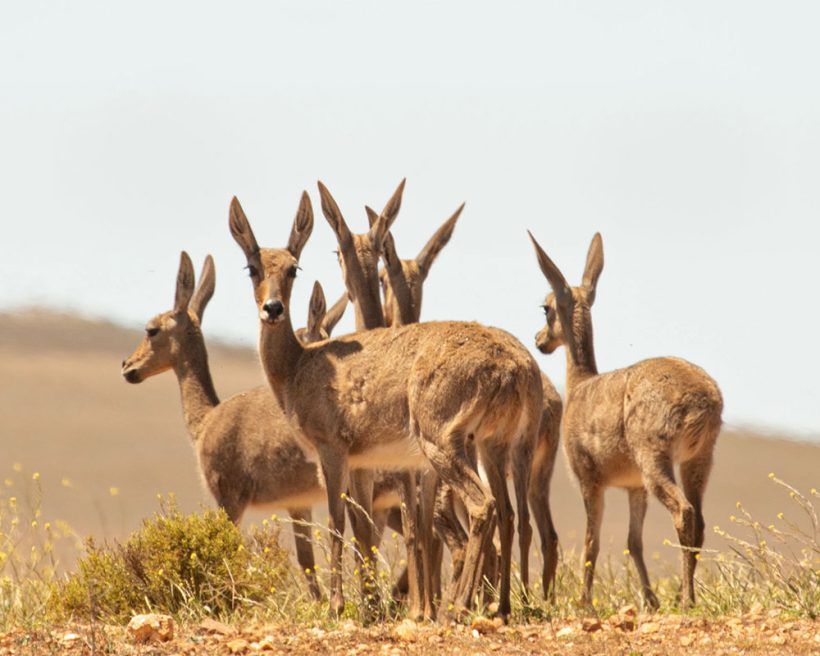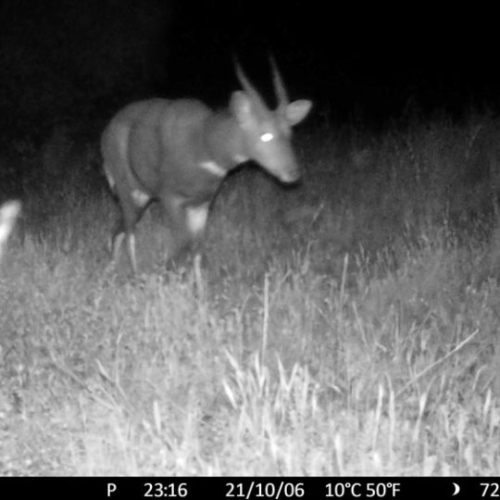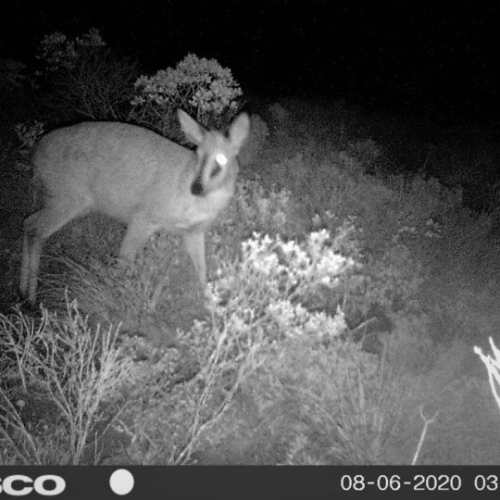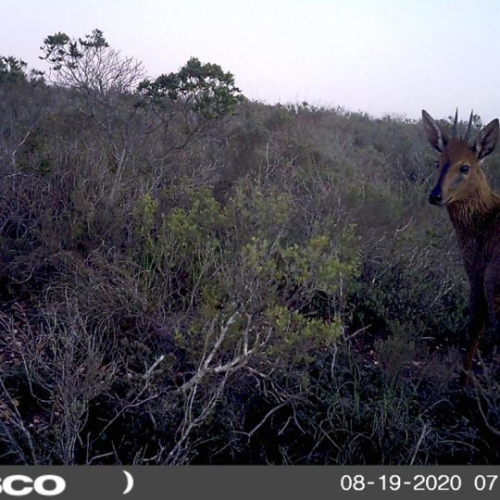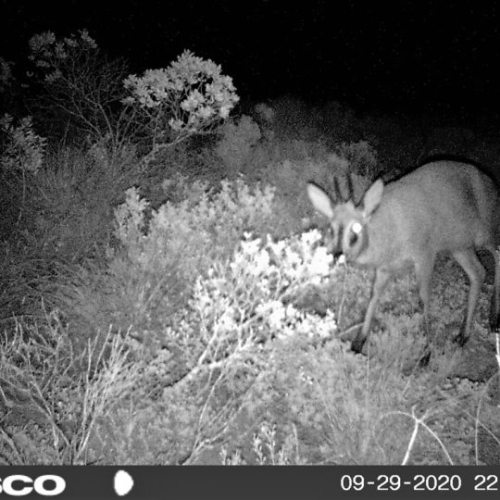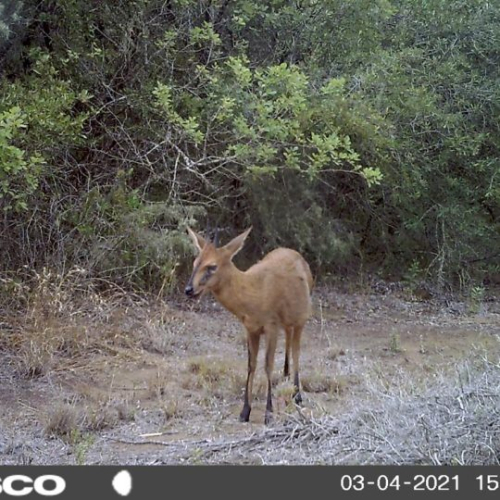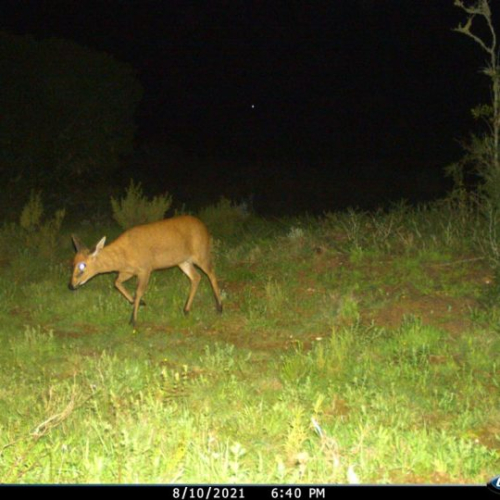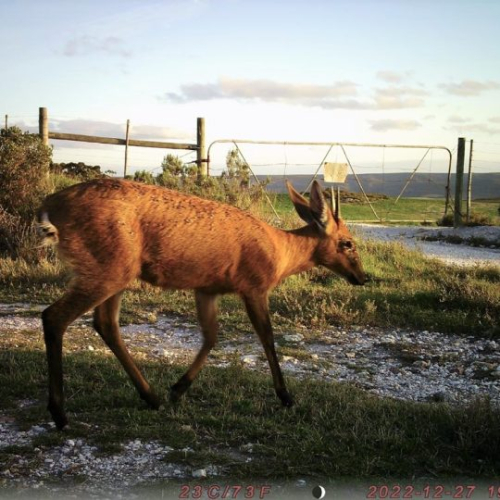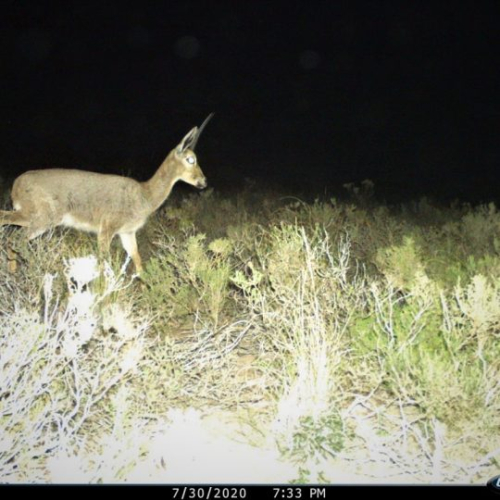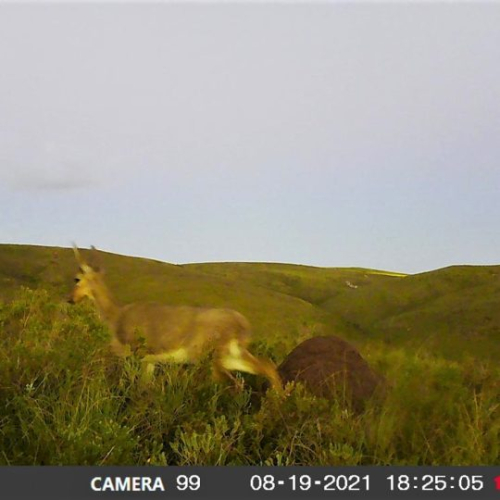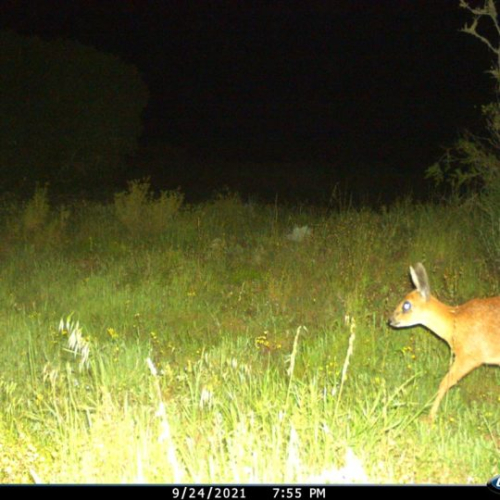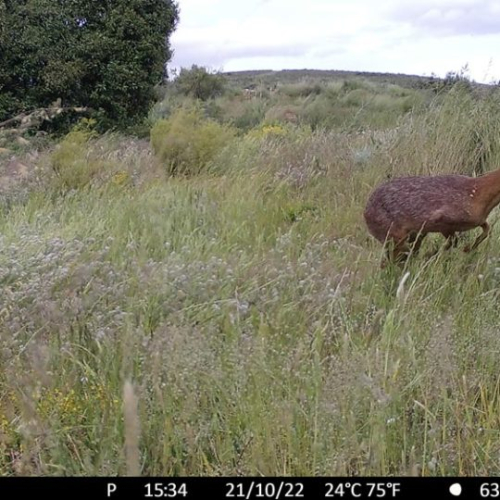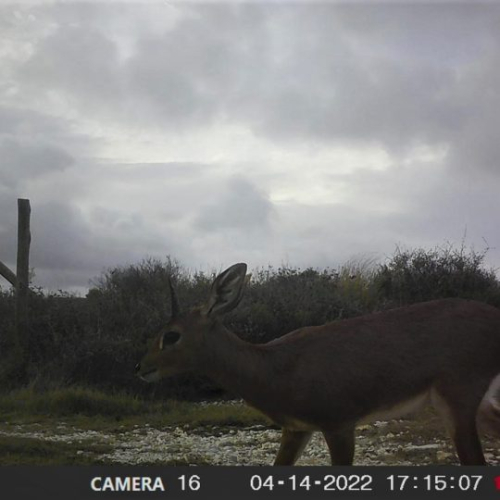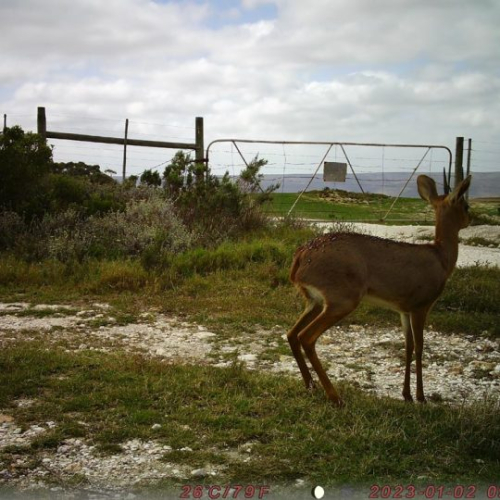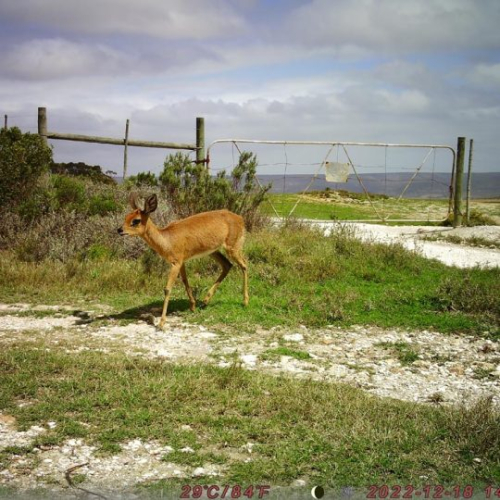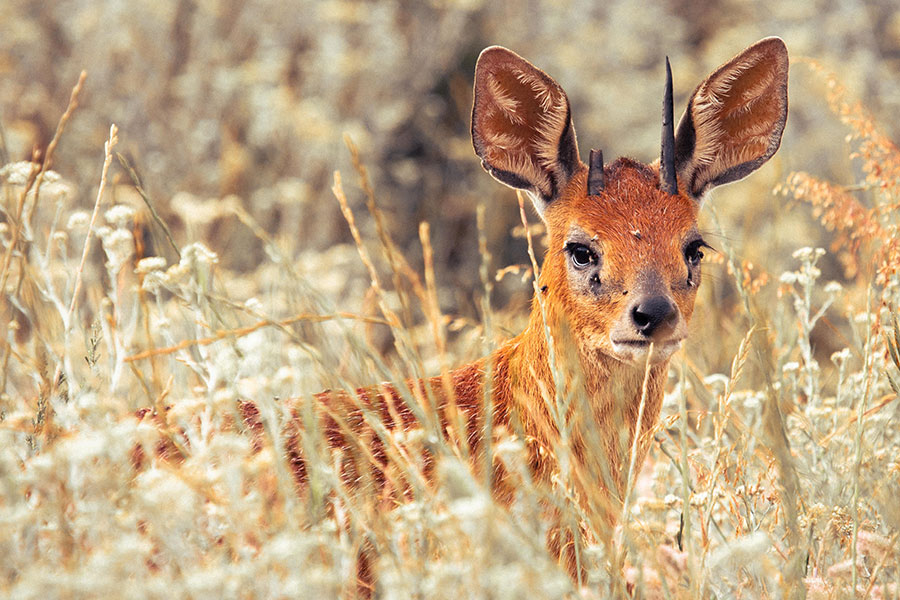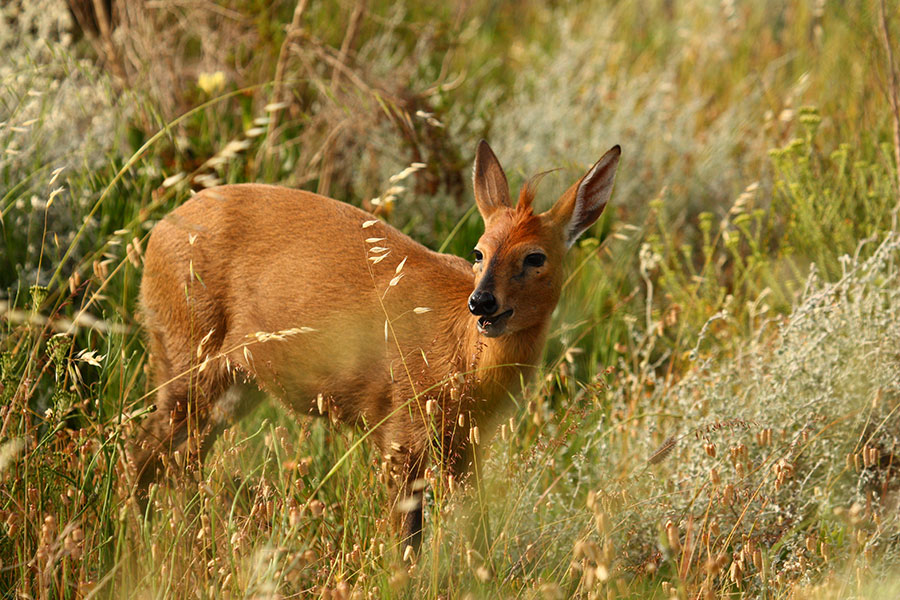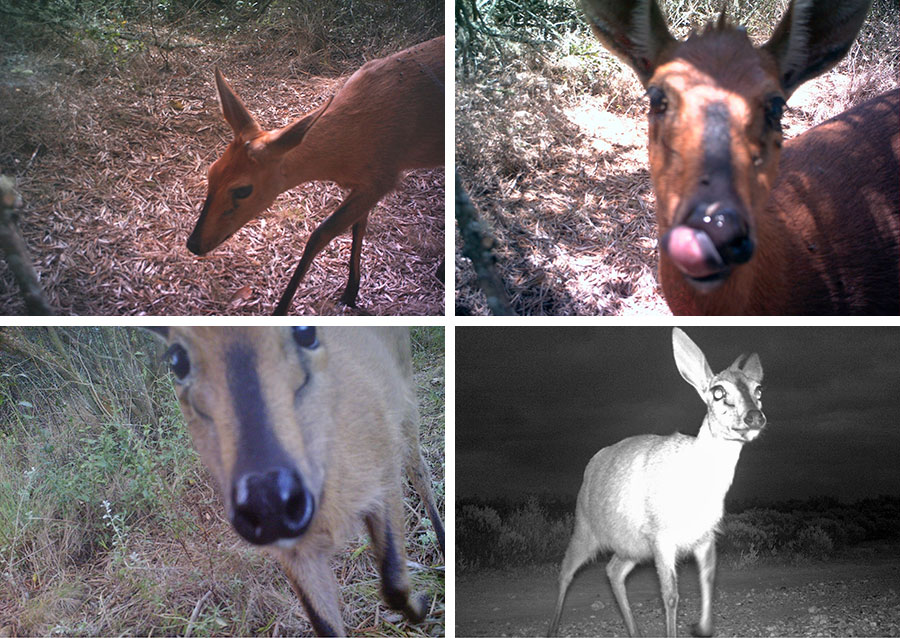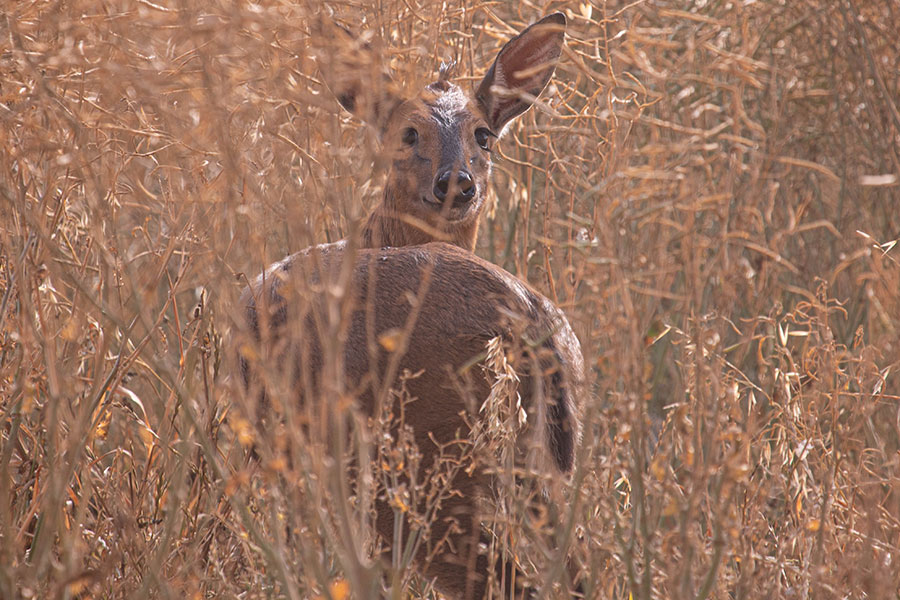By Nande Notyalwa, ORCT intern
A striking feature of the Overberg’s Renosterveld is its highly transformed and fragmented state. Renosterveld has seen huge declines in the abundance of plant and animal species. Yet somehow it still holds remarkable diversity. Regions that have seen agricultural transformation, like the Overberg, may however provide novel habitats that help certain animals to survive.
Above: Grey Rhebok (Pelea capreolus)
These are the findings of Nelson Mandela University’s MSc researchers Amauréé Jansen van Vuuren and Hermanus Swanepoel, who investigated how five small antelope species have adapted to a landscape irreversibly impacted by humans in the Overberg.
They chose these five focus species:
- Grey Rhebok (Pelea capreolus)
- Steenbok (Rhaphicerus campestris)
- Bushbuck (Tragelaphus sylvaticus)
- Common duiker (Sylvicapra grimmia)
- Cape Grysbok (Rhaphicerus melanotis).
The researchers sought to determine how the matrix of farms and the remaining Renosterveld fragments impact on the occupancy of these browsing species between De Hoop Nature Reserve and the surrounding farms. The ORCT’s Haarwegskloof Renosterveld Reserve formed part of the study. They also looked at the forage selection for each species – to see how dependent they were on the transformed agricultural land versus the remaining Renosterveld fragments for food.
Above: Cape Grysbok (Rhaphicerus melanotis)
The studies found that Grey Rhebok, Steenbok and Duiker are more common on agricultural land in comparison to Renosterveld and fynbos. On the other hand, Bushbuck and Cape Grysbok were as likely to be found on transformed land as on Renosterveld fragments.
Above: Common duiker (Sylvicapra grimmia)
You are what you eat
The diet of each species was then studied in more detail to see how they were influenced by the fragmentation of the landscape.
The Bushbuck, Steenbok and Grey Rhebok diets mainly consisted of agricultural crops rather than natural veld. The researchers therefore assumed that these species not only choose crops over natural vegetation when foraging, but that they also therefore would spend more time in crop areas versus natural areas. It’s known that Steenbok occupy surprisingly open areas. While Bushbuck may move to areas with vegetation cover to avoid predators, they can be lured back out by attractive food in the agricultural land, as well as by other Bushbuck.
Above: Steenbok (Rhaphicerus campestris)
Grey Rhebok are deemed to be mixed feeders, as they occur naturally within open grasslands. As such, their foraging within agricultural lands is not unexpected owing to the resemblance between the landscapes.
The researchers found that Cape Grysbok and Common Duiker diets consisted mainly of natural vegetation, supplemented with some crops species. Both species seem to frequently benefit from Renosterveld. However, they are not wholly dependent on it. The analysis showed that their preferred natural forage plants were Hermannia species, as they are highly palatable. Within agricultural lands, barley was the favourite as a result of its high nutrient-rich content.
The importance of Renosterveld as a food source
The research has demonstrated how certain antelope species readily make use of resources available in an altered landscape while other species still largely depend upon the remaining fragments of Renosterveld. Nonetheless, species that mainly consume natural vegetation occasionally supplement their diets within the agricultural lands.
This once again highlights the importance of conserving and protecting Renosterveld in its entirety.
A thank you to researchers Amauréé Jansen van Vuuren and Hermanus Swanepoel, their supervisors, Nelson Mandela University, the Overberg farming community and particularly farmers that allowed research to be conducted within their properties!
Above: Common duiker (Sylvicapra grimmia)
References
Swanepoel, H.I.J. 2021. The impact of transformed landscapes on the resource selection and occupancy of specialized browsing species in a lowland Fynbos and Renosterveld ecosystem. MSc dissertation. Nelson Mandela University.
Van Vuuren, A.J., Fritz, H., Venter, J.A. 2021. Five small antelope species diets indicate different levels of anthrodependence in the Overberg Renosterveld, South Africa. African Journal of Ecology 00, 1-9.

